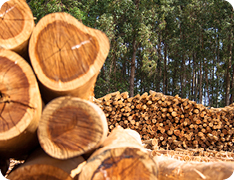 There’s good news for C corporations that have owned timber for at least 15 years.
There’s good news for C corporations that have owned timber for at least 15 years.
The tax rate for timber gains just dropped to 23.8 percent under Section 334 of the Protecting Americans from Tax Hikes (PATH) Act, which was signed into law December 18, 2015. The 23.8 percent rate for qualified timber gains appears to come from the 20 percent tax on net capital gains that individuals are subject to plus the 3.8 percent additional tax on their net investment income, which came into effect with the passage of the Affordable Care Act.
Now, any C corporation with both a net capital gain and a qualified timber gain can utilize the 23.8 percent rate—established under Internal Revenue Code 1201(b)—for the tax year beginning after December 31, 2015. To be considered qualified timber gain, the corporation must cut timber that’s been owned for more than 15 years.
This is a big deal because for decades there was effectively no corporate tax rate break for eligible capital gains related to the harvest of timber while one did exist for individual taxpayers. C corporations could use the alternative rate, which was the highest ordinary corporate rate: a whopping 35 percent.
This new provision offers some level of economic parity between individual taxpayers and corporations, which never really got the benefit of Internal Revenue Code Sections 631(a) or 631(b).
Code Sections 631(a) and 631(b)
Under IRC Section 631(a), if a taxpayer owned or held a contract right to cut timber for more than one year, the taxpayer could elect to treat the cutting of timber as a sale of standing timber, whether the logs are for sale or for use in the taxpayer’s trade or business. If the election is made, the gain or loss is calculated as the difference between the fair market value of the timber on the first day of the tax year and the adjusted basis for depletion of the timber in the hands of the taxpayer. Once the election is made, it can be revoked in later years only with consent from the Internal Revenue Service commissioner.
Dispositions under Section 631(b) are different in that taxpayers don’t harvest the timber for sale or for their own use in a trade or business. The owner of timber disposes of timber through a cutting contract or through an outright sale. If the timber is held for more than one year and disposed of by the owner, then the difference between the amount realized from the disposal of the timber and the adjusted basis of the timber is considered as if it were a gain or loss on the sale of the timber.
For a cutting contract with a retained economic interest—a pay-as-cut contract, for example—the date of disposal is the date that the timber is cut; however, the owner may elect to treat the date of payment as the date of disposal if payment is made to the owner before the timber is cut. In this case, an owner includes any person who owns an interest in the timber, including a sublessor and a holder of a contract to cut timber.
Under the new rules, qualified timber gain is the gain a taxpayer would report under 631(a) or 631(b) on timber that was cut or sold (subject to the 15-year holding period).
Recalculating Your Tax
If you have qualified timber gain, then your tax on the capital gain income is the sum of 23.8 percent of the least of qualified timber gain, the net capital gain, or your taxable income, plus 35 percent of the excess gain (using the alternative rate) if your net gain exceeds your qualified timber gain.
However, it’s possible to lose the benefits of this rule under the so-called least-of rule if the recalculated tax is higher than the tax calculated under the ordinary tax rates.
The complexity of the calculations may require corporations to do some planning when applying the new law. For example, it may become relevant to coordinate the timing of qualified timber capital gains and other capital gains to best manage the overall tax results. This may result in either the acceleration or deferral of various types of income to manage this result.
Over the past number of years there have been conversions of corporate timber companies to take advantage of the real estate investment trust (REIT) provisions. The REIT provisions allow a corporation to effectively benefit from individual capital gain rates for a single layer of tax, subject to meeting certain conditions. The new tax law may provide corporations an alternative where a REIT conversion isn’t possible.
We're Here to Help
While this benefit will probably only affect a small number of companies, it’s an option that wasn’t available before. If you’d like to learn more about how this new provision might affect your business, contact your Moss Adams professional.